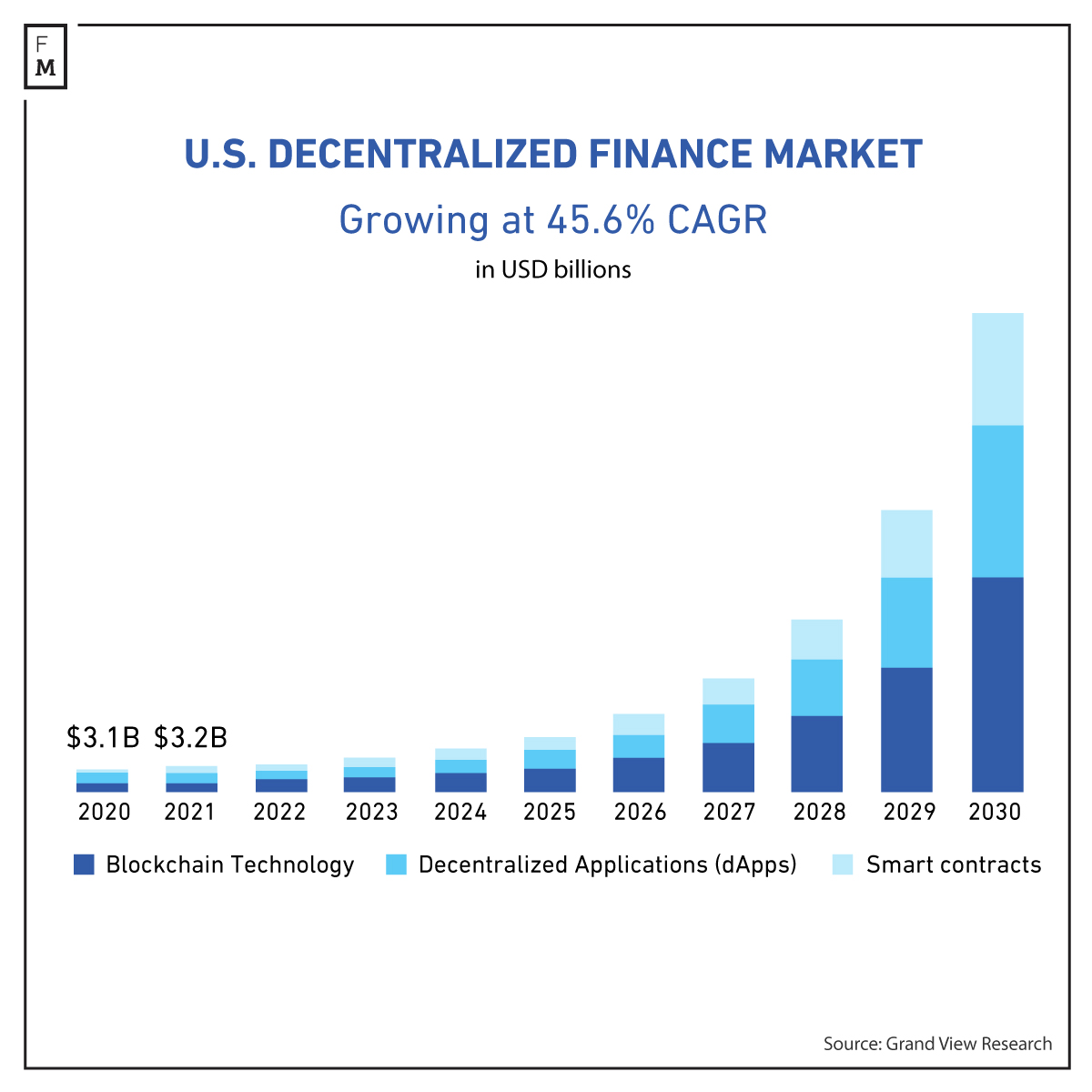The global economy has undergone a massive transformation over the last couple of years, especially with the convergence of traditional finance (TradFi) and decentralized finance (DeFi) taking place rapidly in recent months.
To this point, the rise of DeFi has disrupted the traditional financial system. It created new opportunities for individuals to manage their finances without relying on intermediaries, such as banks, lenders, etc. However, its adoption is still in its nascent stages, with many individuals becoming skeptical of space after the string of hacks and rug pulls witnessed last year.
That said, the coming together of TradFi and DeFi can bridge the gap between these two systems and create a more inclusive financial system for all. For example, TradFi can provide the security and regulatory framework that DeFi lacks, while the latter can offer a decentralized and inclusive financial system that its conventional counterpart cannot.
Not only that: the confluence of the two domains can also lead to the creation of new financial products and services that are not possible in either system alone.

Realizing the Unlimited Potential
One of the primary benefits of TradFi and DeFi convergence is the ability to provide financial services to those who were previously unbanked or underbanked. The decentralized nature of DeFi enables individuals to access financial services without having to go through intermediaries such as banks, leading to greater financial inclusion, especially for individuals in underdeveloped countries who have little to no access to traditional banking services.
Moreover, centralized exchanges offering DeFi products to their clients can offer the security and regulatory framework of TradFi while offering various decentralized products. As a result, many individuals may have yet to be able to participate in the DeFi market in a secure and regulated environment.
Transparency of finance is another area that can be improved through the convergence of TradFi and DeFi. The use of blockchain technology ensures that all transactions are recorded in a transparent and immutable manner, making it easy for individuals to track their financial transactions while creating more trust and reducing instances of fraud and corruption.
Another advantage is low-cost transactions: the decentralized nature of DeFi eliminates the need for intermediaries, resulting in lower transaction fees than traditional financial services.
And lastly, the amalgamation of TradFi and DeFi can engage new social groups, as the non-local nature of decentralized finance allows individuals to access financial tools in a borderless environment. This will enable greater financial inclusion for marginalized communities such as women, social minorities, and citizens of countries with strict financial regulations.
Convergence as a Solution
Many projects in the market today are actively trying to provide users with the best of both the TradFi and DeFi sectors.
For example, Islamic Coin is helping bring investors from the global Islamic community into the crypto economy by providing them with an ethics-first, Shariah-compliant asset within the Haqq blockchain ecosystem. Thanks to its finite token supply framework, it meets all of the criteria of a Halal asset, rooted in the ethos of sustainability, ethics, and transparency, with all of the project’s financial data (i.e., transactions) being easily accessible online via Gnosis Safe.
Another project worth mentoring in this regard is Circle, a peer-to-peer payments technology company working to bring DeFi and TradFi together by leveraging blockchain technology. It allows individuals to transfer money globally using USDC, a stablecoin pegged to the US dollar, as well as harnessing the power of the two tech spaces with the touch of a button.
Similarly, MakerDAO is a decentralized lending platform that enables individuals to access loans using cryptocurrency as collateral. It allows for the creation of a stablecoin, Dai, that is pegged to the US dollar, making it possible for individuals to access low-cost loans in a decentralized fashion.
The Coming Financial System
The merge of TradFi and DeFi has the potential to create a more inclusive and efficient financial system. However, several steps need to be taken to truly achieve this goal. Firstly, regulators can play a crucial role in creating a governance framework that enables the growth of DeFi while also protecting consumers.
Secondly, DeFi projects can be integrated with existing financial infrastructure, such as banks and payment systems, and traditional financial institutions can adopt and integrate DeFi services into their offerings.
Education and outreach efforts can also increase awareness and understanding of DeFi. At the same time, the collaboration between DeFi and TradFi projects can help share knowledge and resources to create a more inclusive and efficient financial system.
Summarizing the above, merging the two economies will require a collaborative effort between regulators, financial institutions, DeFi projects, and the public.











